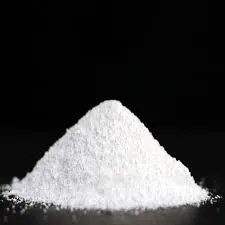The Importance of Sulphamic Acid in Various Industries
Sulphamic acid, also known as amidosulfonic acid or sulfamic acid (chemical formula H₃NSO₃), is a versatile and widely used compound in a multitude of industrial applications. Its unique properties, including its high stability, non-corrosiveness, and water solubility, make it a valuable asset across numerous sectors. Understanding the importance of sulphamic acid requires an exploration of its chemical characteristics and its diverse applications.
Chemical Properties
Sulphamic acid is a white crystalline solid that is highly soluble in water. It is a strong acid, often used as a source of acid in various reactions. Sulphamic acid exhibits low toxicity and is relatively safe when handled properly, making it an attractive choice compared to other stronger acids like hydrochloric or sulfuric acid. Its ability to act as a weak acid and a base allows it to participate in a variety of chemical reactions, thus expanding its usability.
Additionally, sulphamic acid has an intriguing ability to function as a sulfonating agent. This means it can introduce sulfonic acid groups (-SO₃H) into organic molecules, which is essential for the synthesis of various chemical compounds. Its stability under differing temperature ranges also contributes to its effectiveness in chemical processes.
Industrial Applications
The applications of sulphamic acid span several industries, including cleaning, agriculture, pharmaceuticals, and electronics
. One of the most prominent uses of sulphamic acid is in industrial cleaning formulations. It is effective in removing limescale and rust from surfaces, making it a common ingredient in descaling agents for boilers and cooling systems. In household cleaning products, it helps to maintain the cleanliness and efficiency of appliances by eliminating tough mineral deposits.sulphamic

In the agricultural sector, sulphamic acid plays a critical role in the production of herbicides and pesticides. It is utilized in the synthesis of various chemicals required for effective crop protection. By facilitating more effective formulations, sulphamic acid contributes to increased agricultural yields and better pest management.
Furthermore, in the pharmaceutical industry, sulphamic acid is a precursor for several important drugs. Its fundamental chemical structure allows for the introduction of various functional groups, which can lead to the development of novel therapeutic agents. Researchers often utilize sulphamic acid in synthetic pathways to derive complex compounds that exhibit desirable pharmacological properties.
The electronics industry also benefits from the unique properties of sulphamic acid. It is used in the manufacture of semiconductors, where it acts as an etching agent. The acid’s ability to create precise patterns on semiconductor substrates is crucial for the production of high-performance electronic components. Additionally, sulphamic acid finds applications in the formulation of various light-sensitive materials used in printing and imaging technology.
Environmental Impact
One of the significant advantages of sulphamic acid is its relatively low environmental impact compared to other harsh chemicals. It breaks down more readily and poses fewer risks to aquatic systems when released in wastewater, making it a more environmentally friendly option in various industrial processes. Moreover, its different applications can often lead to reductions in the use of more hazardous materials, promoting safer practices across different sectors.
Conclusion
Sulphamic acid, with its diverse range of applications, is an essential compound in modern industry. Its unique properties not only facilitate various chemical processes but also support the development of cleaner and more sustainable products. As industries continue to innovate and evolve, sulphamic acid will undoubtedly remain a critical component, underlying advancements in cleaning technologies, agricultural practices, pharmaceutical developments, and electronic manufacturing. Emphasizing the importance of such versatile chemicals opens the door to further research and applications, paving the way for a more efficient and environmentally responsible industrial landscape. The role of sulphamic acid in fostering innovation while ensuring safety and sustainability cannot be overstated, marking it as a significant ally in contemporary industrial practices.

